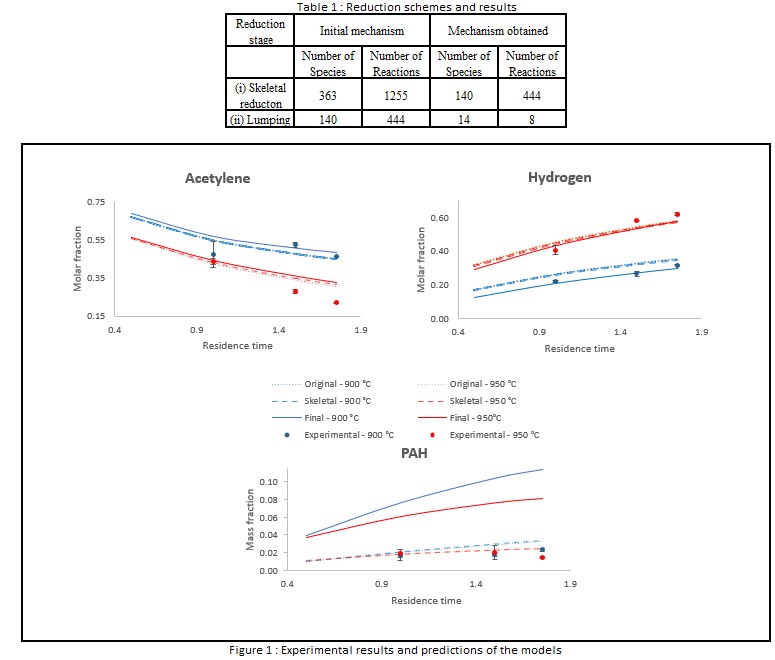2023 AIChE Annual Meeting
(699g) Reduction of a Detailed Kinetic Mechanism of the Pyrolysis of Acetylene
Due to their widespread application in a vast array of industrial processes, numerous kinetic mechanisms aiming to model the pyrolysis of light hydrocarbons have emerged in the literature. Because of the complexity of the phenomena involved, such mechanisms usually comprise hundreds to thousands of species and reactions and demand considerable CPU time. To reduce their computational cost and facilitate the coupling of these mechanisms with other phenomena, kinetic mechanism reduction methods can be applied. In this study, the reduction of a detailed kinetic mechanism used to model the pyrolysis of acetylene and the formation of polycyclic aromatic hydrocarbons (PAH) during low pressure gas carburizing (Bensabath et al., 2016) is presented. The reduction scheme adopted consists of two main stages (Table 1): (i) a reduction is first carried out with the ANSYS Chemkin Reaction Workbench by means of skeletal reduction methods and (ii) the skeletal mechanism obtained is further reduced by the lumping of species, radicals, and reactions of the same type. The accuracy of the mechanisms obtained is evaluated by comparing the predictions of molar fractions of major species like acetylene and hydrogen, as well as the total mass fraction of PAH, to the detailed model and to experimental data. The latter was obtained from acetylene pyrolysis experiments conducted in a tubular reactor at temperatures ranging from 850 to 1100 °C, pressures from 300 to 8000 Pa and residence times from 0.5 to 3 s. A very good agreement is observed between the predictions of all models and experimental results for acetylene and hydrogen (Figure 1). PAH formation, while accurately predicted by the original and skeletal mechanisms, is overestimated by the final mechanism, yet the results are encouraging. They will be improved in future works which will aim to adjust the kinetic data by the method of least squares.


